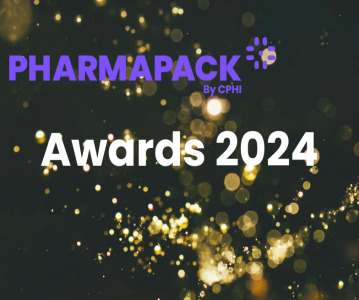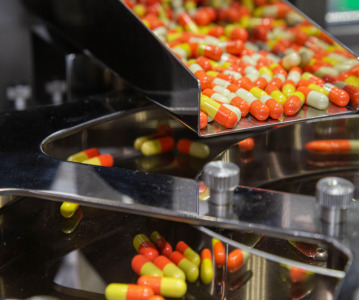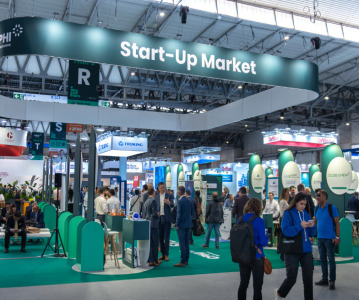CPHI Panel Demands Industry Share Technology and Collaborate to Advance Manufacturing and Development Skills

CPHI Worldwide, part of UBM Live’s Pharmaceutical Portfolio, has announced the findings of part two of its second annual report at the 25th CPHI Worldwide in Paris. Three world-renowned experts — Prabir Basu, Consultant, Pharma Manufacturing, Emil Ciurczak, President at Doramaxx and Brian Carlin, Director Open Innovation at FMC — each envisage new approaches that will bring continuous processing into use within 5 years, imploring the creation of a “pharmaceutical technology commons” and highlighting the growing need for excipients and co-processed excipient development.
One of the key findings highlighted by several panel members has been the need to implement QbD across the industry. A great benefit of this and process analytical technology is that it allows designer experiments to be alterable during a run, making developmental changes far quicker to implement. However, Prabir Basu warns that for revolutionary technologies like this to proliferate around the pharma community a “pharmaceutical technology commons” is needed, so that new technologies can be shared openly and transferred more easily between different companies to help the industry advance more quickly on previous innovations. “At present new technology is primarily used internally within one company, with the remainder of the industry, especially the generic manufacturers, continuing to use old methods.”
In fact Basu goes further and believes that pharma needs not only to heed the experiences of its sector, but actively learn from other engineering disciplines. He advocates that in the absence of a true Pharmaceutical Engineering discipline, QbD in pharmaceutical manufacturing should be taught in Universities by mechanical/chemical engineering departments, who are familiar and experienced in teaching manufacturing design, manufacturing operations, and manufacturing quality. Pharmaceutical manufacturing should no longer be treated just as an extension of pharmaceutical development. Emil Ciurczak has echoed these concerns and believes that in the future we will see a broader educational mix within the industry. New technologies will also increasingly be created out of universities and the regulators themselves.
Continuous processing will be one technology that will benefit hugely from a collaborative approach between branded and patented companies with widespread adoption predicted in as little as 5-years by Ciurczak. Even more remarkable, Basu outlined a future where 3D printing could be used to dispense individual dosage forms.
Another major point of convergence is that the regulators should start examining the quality of manufacturing – using QbD and OPEX programmes – instead of the current quality by inspection approach.
Brian Carlin forecasts that as QbD adoption increases, new excipients will finally start coming to market (only three new chemical entity excipients have launched in the last two decades). Previously pharma had been risk adverse to excipient development, however, increasing use of continuous manufacturing and the increasing Cost of Poor Quality (COPQ) is meaning that co-processed excipients in particular are likely to be increasingly developed in the future. Carlin warns that with regulators starting to use quality metrics and categorising applicants in terms of risk, COPQ is set to rise substantially. One major step in the right direction has been the United States Pharmacopoeia and its strident efforts to facilitate the monography of co-processed excipients by publishing guidance on their development. They also allow for “pending” monographs to be developed in parallel with industry adoption with FDA/ANDA, which should reduce overall time to Pharmacopoeia listing and encourage adoption in future.
Chris Kilbee, Group Director Pharma at CPHI commented: “The CPHI annual report contains more than 20,000 words of in-depth insights into the current and future developments taking place across the industry. Moreover, the our experts have gone further than this and recommended vital improvements that industry and regulators should look to implement to better aid discovery, quality and efficiency of the drug manufacturing process. I would advise all of the attendees and the wider industry to download a (free) full copy of report and help us to further develop technologies and techniques. Since CPHI was incorporated, the industry has made huge strides in the last 25 years and this is in part thanks to collaborations and contacts we help facilitate. With our reports, CPHI is now more than an opportunity to meet business partners and we are actively encouraging knowledge sharing and innovation across the industry. By implementing the recommendations from our panel, the pharma industry will advance more quickly, develop better and safer drugs and usher in a new age of targeted and efficient drug discovery and production. The future is very exciting for the industry and we hope that our pharma insight reports will help the wider pharma community think bigger in terms of what is now possible and will soon be in the future.”
CPHI has made the full findings of its annual report available for download at:
http://l.cphi.com/annual-report2014
Related News
-
News Pharmapack Awards 2024 Patient-Centric Design Award Winner – Dr Ferrer BioPharma
The 2024 Pharmapack Awards celebrated the best in innovation and design for the pharmaceutical packaging and drug delivery industry on January 24, 2024. -
News Women in Pharma: Minding the Gap at Pharmapack 2024
2024 marks the first year Pharmapack will host a Diversity track dedicated to bridging the gap within the pharmaceutical packaging and drug delivery sector. The track includes a panel discussion on 'Enabling Diversity in the Workplace,' focused... -
News Pharmapack Awards 2024 - Celebrating Packaging and Drug Delivery Innovation
The 2024 Pharmapack Innovation Awards ceremony celebrated the best in pharmaceutical packaging and drug delivery innovation at all levels. The awards were held on January 24, 2024 at the Paris Expo Porte de Versailles. -
News Pharmapack 2024 - From the Floor
Paris once again welcomes Europe’s leading trade show in pharmaceutical packaging and drug delivery innovation. Join our content team as Pharmapack 2024 opens its doors to leading experts and innovators in pharmaceutical packaging and drug delive... -
News CPHI Barcelona 2023: Partnering for Success – Managing Outsourcing Relationships to Optimise Manufacturing Operations
During CPHI Barcelona 2023, insightful content sessions offered attendees the chance to explore trending topics with expert speakers and panellists. Here, we summarise what the pharma industry and supply chain are talking about the most. -
News CPHI Barcelona 2023: Loading Potential – Artificial Intelligence for Pharma Manufacturing
During CPHI Barcelona 2023, insightful content sessions offered attendees the chance to explore trending topics with expert speakers and panellists. Here, we summarise what the pharma industry and supply chain are talking about the most. -
News Pharmaceutical industry supports COP28 health stance in joint statement
As COP28 takes place over this week in Dubai, UAE, several bodies in the pharmaceutical and health industries have come together to announce support of key movements in sustainability in the sector, and to recognise sustainability as a health issue.&nb... -
News CPHI Podcast Series: Start-ups take centre stage at CPHI Barcelona
The first episode of the CPHI Podcast Series since we attended CPHI Barcelona in October covers the Start-up market at the event, with expert Matthew Wise joining Editor Lucy Chard to discuss the event.
Position your company at the heart of the global Pharma industry with a CPHI Online membership
-
Your products and solutions visible to thousands of visitors within the largest Pharma marketplace
-
Generate high-quality, engaged leads for your business, all year round
-
Promote your business as the industry’s thought-leader by hosting your reports, brochures and videos within your profile
-
Your company’s profile boosted at all participating CPHI events
-
An easy-to-use platform with a detailed dashboard showing your leads and performance





.png)

